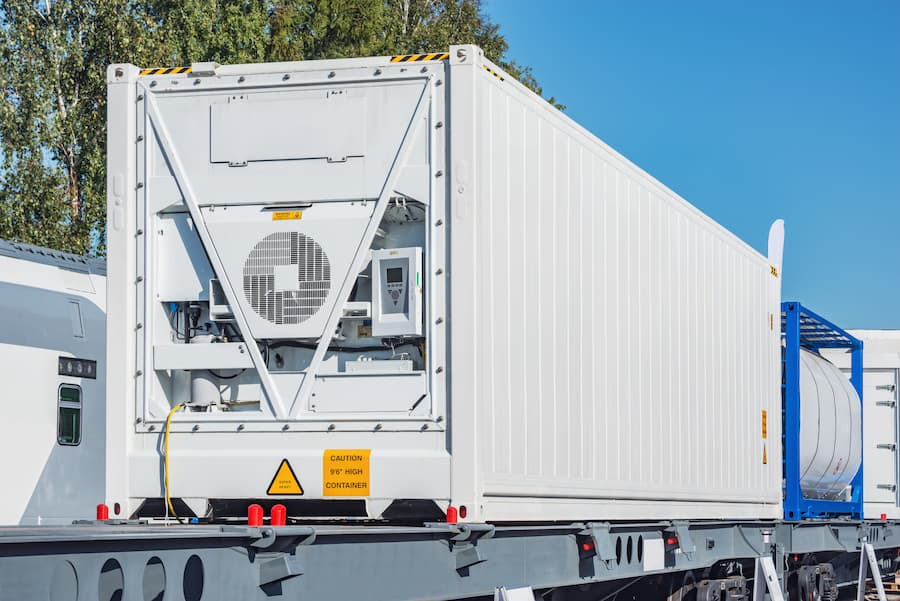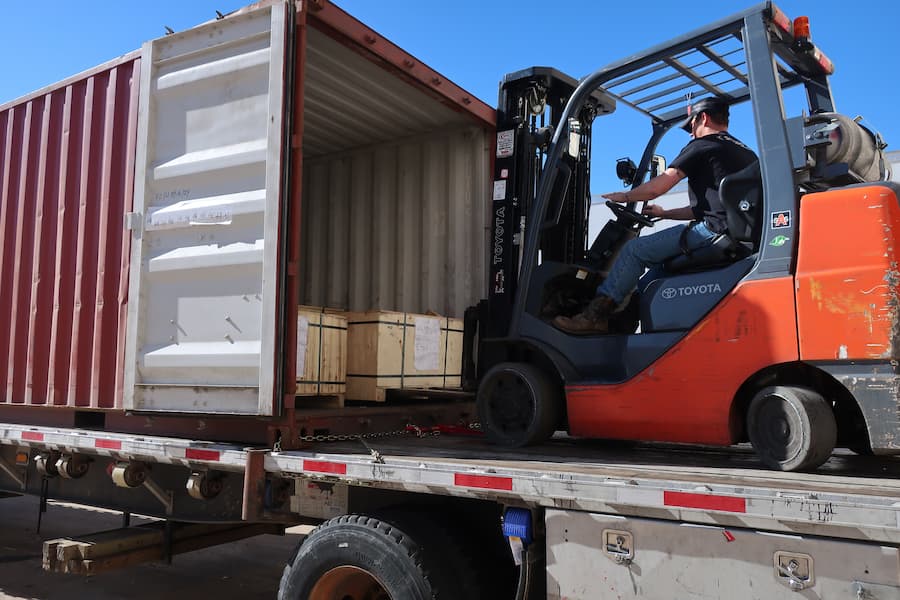The truck driver shortage is on everyone’s radar. It’s affecting everything from UPS package delivery to heavy equipment transport, and reports on the shortage have made headlines in the Wall Street Journal and provoked feature stories on NBS news. But there’s another shortage—one that’s still only recognized by transportation insiders and that’s already having a big effect on the shipping industry.
Orders for heavy-duty trucks in July and August 2018 nearly tripled from the year before. The record-breaking number of orders for new trucks was especially notable since summer sales are notoriously slow.
“The two biggest order months [usually] would be October-November or November-December,” said Don Ake of FTR Transportation Intelligence. “Clearly the industry is on a bender, as the August order intake is nearly laughable,” said Kristine Kubacki, an analyst at Mizuho Americas.
According to ACT Research Co., July’s 52,400 heavy-duty truck orders broke a previous record of 52,194 orders set in March 2006. And that July record was broken in August when customers ordered 53,100 trucks, which was 0.9% more than July. Trailers are also hot commodities: The 38,200 trailers ordered in August 2018 marked a 104% increase from the same period last year.
Trucking equipment shortages differ from the scarcity of other goods. “In normal shortage situations, supply and demand get brought back into balance because prices increase, slowing demand and speeding supply,” says Ake. “In trucking equipment, the prices were quoted and locked into months ago and can’t be increased.”
Why Now?
The current shortage is probably driven by a number of factors, including:
A strong economy – “According to the Federal Reserve, as reported in The Wall Street Journal, industrial production had the largest year-over-year gain since 2010 this past December, meaning there’s more demand to ship goods across the country,” says Fleet Advantage’s Brian Holland. Good employment numbers also mean that consumers are buying more goods, which contributes to freight levels.
E-commerce growth – Consumers are also buying more goods online, which means more deliveries.
Aging trucks – More deliveries = more trips = more wear on trucks. Technological advances and better fuel economy add to the attraction of new models.
Tax cuts and benefits – Recent corporate tax cuts have also made it an attractive time to buy new trucks. Additionally, transportation companies benefiting from the boom are buying trucks in order to offset taxes.
Limited supply – Shortages of parts to build trucks and trailers have contributed to the issue. “Almost every industry was talking about supply chain constraints,” says Kubacki.
Higher spot rates – According to DAT Solutions LLC, spot rates have risen up to 30 percent this year. The higher rates have forced companies to consider buying new trucks rather than deal with spot rate costs.
Shifting needs – Shipping is changing. Werner Enterprises Inc., which recently added 565 trucks to its dedicated fleet, explained the purchase in a quarterly earnings release: “Changing industry dynamics are occurring as customers shift freight from one-way fleets to shorter length of haul dedicated fleets, which result in the need for more trucks to haul the same amount of freight.”
Effects of the Shortage
One obvious consequence of the shortage is a backlog. Daimler Trucks North America is sold out for the rest of this year and the first half of 2019. The backlog for Wabash National Corp. trailers increased 80% from last year. According to Kubacki, the overall rate of backlogged new truck orders rose 193% from last year.
The scarcity of trucks (and drivers) also results in longer delivery times and higher shipping costs, which are causing problems for auto carriers, retail, food manufacturing and food service markets. Some restaurants are turning to more expensive local produce rather than gambling on cross-country deliveries.
The lack of trucks also means that used trucks are going for higher prices. According to J.D. Power, the cost of late-model trucks in 2018 was 6.2% higher than during 2017.
Truck leasing is also on the rise, according to Holland, whose company offers the service. “The ability to now leverage critical data and analytics is playing a major role in helping fleets decide whether to lease versus purchase,” says Holland, “especially since this data can identify specific costs that affect the bottom line over time in both a lease or purchase scenario.”
And the truck shortage is causing, well, the truck shortage. The scarcity of trucks is driving spot rates higher, and as mentioned, those rates are making companies look to purchase more trucks. And of course, many of the parts needed to manufacture new trucks and trailers are shipped by…truck. In fact, trailer maker Wabash National Corp.’s net income fell due to operational issues that included delayed deliveries—even as the company posted its second-highest revenue ever.
The Future
Some industry professionals don’t see the new truck sales boom continuing. “Very rarely does this magnitude of orders completely make its way to retail sales, with higher cancellation rates typical at some later date,” R.W. Baird & Co. analyst David Leiker wrote to investors. “There’s no penalty for fleets to cancel orders,” says Ake. “You’re going to see that start next year, and when it happens, it’s the first signal the equipment markets are starting to slow.”
Navistar Chief Executive Troy Clarke doesn’t see that happening. “We feel very good about where we are today. We have good visibility into [the first quarter] next year. There are not a lot of cancellations. The specifications are defined, and the trucks are lined up in our production lines.” And many truck sales outlets are optimistic. “Dealers with enough wherewithal to support large inventories are indeed driving build and order demands,” said the Kriete Group’s David Kriete.
Of course, a weakening economy would slow sales, and recently imposed tariffs could impact manufacturing. “While the vast majority of our materials are purchased domestically, some secondary components may be sourced on a global level and, as such, be subject to tariffs, particularly the latest round of tariffs,” says Wabash CEO Brent Yeagy.
Let Us Handle the Headache
The truck shortage is a complex, complicated problem. Many transportation issues are, especially when it comes to oversized shipments and heavy equipment transport. We have the expertise to deal with those issues, and pretty much any other challenge you give us. At Next Exit Logistics, we earn the trust of our clients with efficiency, transparency, and security (read our testimonials). In addition, we understand how to handle freight services for unusual, oversize, or overweight shipments and are certified to arrange the shipment of hazardous materials. To learn more about our services, call Next Exit Logistics at 866-624-2661 or contact us via email.




